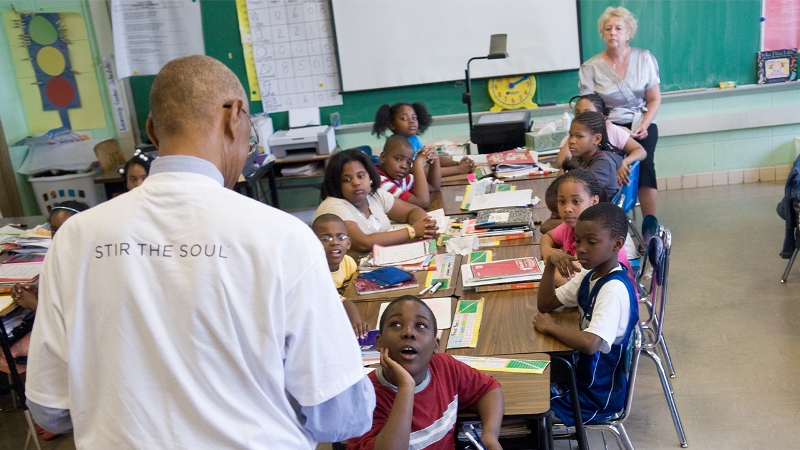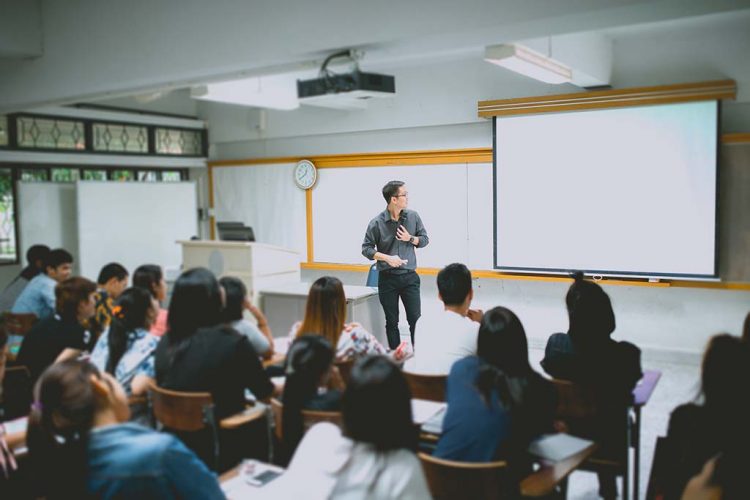Achieve Academic Success with Primary Science Tuition Singapore
Achieve Academic Success with Primary Science Tuition Singapore
Blog Article
A Comprehensive Overview to the Different Knowing Approaches in Main Scientific Research Instruction
The expedition of diverse learning techniques in primary science direction presents a possibility for teachers to boost student involvement and comprehension significantly. By examining hands-on understanding techniques, inquiry-based approaches, and collective techniques, we can recognize reliable methods that accommodate various finding out designs. Furthermore, the assimilation of technology and distinguished instruction plays an essential function in cultivating a comprehensive environment. The inquiry continues to be: how can these methods be efficiently carried out in the class to optimize their effect? The response lies in a closer assessment of each method and its implications for teaching science.

Hands-On Understanding Methods
Hands-on discovering methods play a critical function in key scientific research instruction, engaging students in active exploration and testing. These techniques enable students to connect directly with phenomena and materials, cultivating a deeper understanding of scientific principles. By using manipulatives, models, and real-life experiments, instructors develop an atmosphere where trainees can observe, hypothesize, and evaluate their ideas.
Such techniques not only boost understanding yet additionally grow essential reasoning and analytic abilities. When pupils join tasks like developing easy devices, planting seeds, or conducting chemical reactions, they are encouraged to ask questions and look for solutions with their own observations. This experiential method assists to demystify complex clinical principles, making them much more relatable and obtainable.
Moreover, hands-on discovering advertises partnership among peers, as students often function in teams to carry out experiments or share findings. This teamwork not just enhances their discovering experience but also creates crucial social abilities. Eventually, integrating hands-on strategies in main science instruction cultivates a long-lasting love of knowing and interest regarding the environment, laying a strong structure for future scholastic quests in science and past.
Inquiry-Based Knowing
Inquiry-based learning is an educational strategy that motivates students to ask concerns, investigate sensations, and build their own understanding of clinical ideas. This technique shifts the emphasis from standard teacher-led instruction to a more student-centered experience, where students take the initiative in their instructional journey. By cultivating interest, inquiry-based knowing advertises deeper involvement with the material, allowing pupils to check out topics in a purposeful context.
In method, this method typically entails hands-on experiments, monitorings, and crucial reasoning activities that align very closely with the clinical technique. Pupils are motivated to develop hypotheses, layout investigations, and analyze data, which grows necessary abilities such as problem-solving and analytical thinking. The function of the educator in this structure is to help with exploration, assisting pupils through the query procedure while encouraging independent thought and partnership.
In addition, inquiry-based learning supports a feeling of ownership over the discovering procedure, motivating pupils to seek understanding proactively. This approach not just boosts understanding of clinical principles yet additionally fosters a lifelong love for discovering, equipping pupils with the skills required to navigate a progressively complicated globe.
Collaborative Understanding Approaches
Collaborative learning approaches encourage students to take part in significant interactions with peers, fostering a shared duty for their instructional end results. In primary science direction, these techniques motivate learners to function with each other to check out clinical principles, resolve issues, and perform experiments (primary science tuition Singapore). By taking part in group tasks, pupils can utilize varied viewpoints, permitting richer understanding and retention of scientific understanding
One key element of joint discovering is the emphasis on interaction abilities. Pupils have to articulate their thoughts, pay attention actively to others, and bargain concepts, all of which are crucial proficiencies in both academic and real-world contexts. This social interaction not only improves their understanding of scientific principles yet likewise promotes teamwork and problem resolution abilities.
Furthermore, collaborative learning often brings about enhanced inspiration and involvement. When pupils see the worth of their contributions within a team, they are more most likely to take ownership of their discovering trip. Teachers can facilitate this procedure deliberately structured team tasks that straighten with curriculum goals while supplying advice on effective partnership techniques. On the whole, incorporating collective understanding approaches in main science guideline cultivates a dynamic discovering setting that prepares pupils for future scholastic and social difficulties.
Innovation Assimilation in Scientific Research
The assimilation of technology in primary science instruction enhances learning experiences by providing innovative tools and resources that support numerous training methods, including collective knowing - primary science tuition Singapore. Using electronic platforms, simulations, and interactive applications permits pupils to involve deeply with clinical principles, promoting click over here now a much more hands-on method to learning
Digital laboratories, as an example, make it possible for students to conduct experiments securely and successfully, promoting inquiry-based understanding. These tools can imitate real-world scientific circumstances, permitting students to envision complicated procedures that would be difficult to duplicate in a traditional class setup. Additionally, modern technology fosters interaction and collaboration amongst pupils, as they can share findings pop over to these guys and collaborate on jobs via online systems.
Additionally, multimedia presentations and academic video clips can enrich lessons by dealing with varied learning styles, making abstract ideas extra easily accessible. Information evaluation tools likewise encourage pupils to gather and interpret scientific data, strengthening crucial believing abilities. In general, the critical unification of technology in main scientific research guideline not just enhances interaction yet also prepares trainees for a highly innovative society, furnishing them with crucial abilities for future scientific ventures.
Set Apart Direction Methods
Distinguished direction strategies are necessary for addressing the diverse needs of learners in primary science education and learning. These methods make it possible for instructors to customize their teaching techniques to fit differing abilities, rate of interests, and finding out styles within the classroom. By employing set apart instruction, teachers can create an inclusive environment that promotes involvement and boosts understanding of scientific concepts.
One reliable approach is to use adaptable organizing, which enables students to work together with peers at similar ability levels or with differing viewpoints. This strategy encourages peer knowing and promotes important thinking. Furthermore, providing choices in assignments can encourage pupils, enabling them to select tasks that reverberate with their passions while still satisfying curricular goals.
Moreover, incorporating tiered jobs is one more important technique. By designing jobs with varying levels of intricacy, teachers can guarantee that all students are suitably challenged, despite their efficiency. Utilizing developmental evaluations to gauge recognizing additional enables educators to change their educational techniques dynamically, making sure that each learner gets the support they require.
Eventually, carrying out differentiated guideline techniques in key science education and learning not only boosts student learning results however also cultivates an interest for science, preparing pupils for future scholastic quests.

Final Thought
In summary, reliable key science instruction necessitates a multifaceted technique that encompasses hands-on learning, inquiry-based approaches, and collective strategies. The combination of technology click here for more and set apart direction further satisfies diverse understanding designs, fostering a setting for expedition and crucial reasoning. By executing these strategies, educators can boost student involvement and comprehension, inevitably nurturing a lifelong enthusiasm for science and query. Such comprehensive techniques are vital for developing educated and curious future scientists.
The expedition of varied learning methods in main scientific research guideline presents a chance for instructors to boost student engagement and comprehension dramatically.Hands-on learning methods play an essential duty in primary science direction, involving pupils in active expedition and trial and error.Inquiry-based discovering is an educational approach that motivates trainees to ask inquiries, investigate phenomena, and build their very own understanding of clinical principles.Joint learning methods equip students to engage in significant communications with peers, cultivating a common duty for their instructional outcomes. Overall, incorporating collaborative learning approaches in primary scientific research guideline grows a vibrant discovering atmosphere that prepares trainees for future academic and social challenges.
Report this page